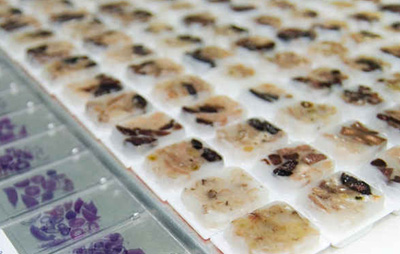Cynomolgus Monkey Brain (NHP-TI126)

Category:Non-Human Primate (NHP) Tissue Block Products
Tag: Cynomolgus Monkey, Tissue Block
Tag: Cynomolgus Monkey, Tissue Block
- This tissue block from Creative Biolabs is isolated from Cynomolgus monkeys' brain. The sample has been verified as negative for multiple types of virus infections including Herpes-B Virus, SRV, SIV, and STLV-1, and can serve as a beneficial tool in a number of in vitro test and assay experiments such as PCR, WB, immunoprecipitation, immunofluorescent flow cytometry.
Detailed Product Description
- Source: Healthy cynomolgus monkey
- Applications: Given their robust resemblances to humans across physiological, behavioral, immunological, and genetic aspects, non-human primates serve as crucial models in a broad range of biomedical research, especially in bridging translational research from small animal models to humans. Creative Biolabs offers both standard formats and personalized non-human primate tissue preparations, catering to diverse in vitro testing applications.
- System: Nervous System
- Organ/Tissue: Brain
- Shipping: Dry ice
Technical Specifications
- Preservation Methods: Snap frozen
- Quality Assurance: Tissue blocks are prepared by histologists with years of experience to be sure of excellent morphology and high quality.
- Packaging: Securely packaged to maintain the tissue quality during shipping.
Downloadable Resources
FAQs
Customer Reviews
-
Q 1: How are the brain tissues ethically sourced from Cynomolgus monkeys?
A: Therefore, procurement of these tissues should be from facilities that operate with great respect for animal welfare up to the observance of even high ethical standards.
-
Q 2: What methods are used to ensure the high quality and preservation of brain tissues for research purposes?
A: These include different methods of fixing, preserving, and storing tissues that help in maintaining cellular integrity so that the tissue can be put to histological examination.
-
High-Quality, Well-preserved,
The use of Cynomolgus Monkey Brain samples from Creative Biolabs in our neurodegenerative research has provided us with a big leap. It includes samples that are high in quality, well-preserved, and key to back the study up with other than being ethically sourced. -
Reliable and Reproducible
The customer service quality of Creative Biolabs is really high, and they helped us in the proper selection of Cynomolgus Monkey Brain tissues for our project. The qualities of the tissues were excellent, and they assured us that our experimental results would be reliable and reproducible.
Click the button below to contact us or submit your feedback about this product.
Online Inquiry
This site is protected by reCAPTCHA and the Google Privacy Policy and Terms of Service apply.
NHP Biologicals from Creative Biolabs are for research, diagnostic, or manufacturing purposes only. They may not be intended for or are not approved for any other use.
Enter your email here to subscribe.
SubmitFollow us on

Copyright © 2026 Creative Biolabs. All rights reserved.

 Cynomolgus Monkey PBMCs
Cynomolgus Monkey PBMCs